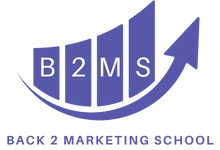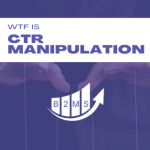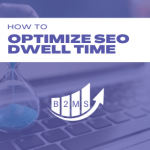NoIndex NoFollow SEO Use Cases
The terms NoIndex and NoFollow keep popping up in search engine optimization. In this post, I explain – in plain English – how these terms affect your SEO results.
What is NoIndex?
NoIndex is a so-called meta tag, which is stored in the Robots.txt file of a website. The Robots.txt file shows search engines which pages of the website are to be considered and which are not. If a NoIndex tag is added to a page, this means a “disallow” in the Robots.txt to crawl the page. Search engines will then ignore the page.
What does NoFollow mean?
NoFollow means, in contrast to NoIndex, that a link is not considered to be followed by search engines.
When search engine crawlers index the page, they “click” and follow every link – internal and external links. With the NoFollow link attribute, you signal to the crawlers not to follow the selected link.
NoIndex SEO Use Cases
SEO marketers use NoIndex for pages they want search engines to ignore. NoFollow simply expresses not to follow a link and thus to count it as a backlink for example.
There are several reasons why a page should be removed from the search engines index. Here are some NoIndex examples:
- Duplicated content across multiple pages
- Keyword cannibalization due to rankings of the same keywords for different pages
- Page is not used for organic marketing purposes, e.g. landing pages for PPC campaigns
- Outdated blog posts that are no longer relevant, but still should not be deleted – saving crawler budget
- Avoiding on-site SEO errors. For example, archives can cause technical on-site SEO errors. To avoid these, you can tell search engines to ignore the page.
- Thank you or resource pages that can only be reached through certain user actions such as a form or content gates. These can also be pages created only for email newsletters, event attendees, or similarly required signups.
- Internal search results for content pages or online stores. Non-indexing can not just lead to duplicate content, but also increase your SEO inventory, which would be harmful in this case. The effort for search engine crawlers would be too high and could lead to relevant pages not being indexed.
What are the reasons for NoFollow tags?
There are many reasons why SEOs assign link meta information to a NoFollow attribute:
- External links that should not be counted as backlinks.
- Advertisements should not be followed. Display Ads normally – if not explicitly set otherwise – have the NoFollow attribute.
- Paid Links: In addition to external links and promotional activities. Sponsored posts may also have a NoFollow tag assigned to them.
- Comments, forums, and user-generated content: Whenever users can implement links themselves, this is often abused. Therefore, all user-generated content should have a NoFollow tag.
The NoIndex NoFollow codes explained
This can be a bit confusing. There are different uses and mixes of the commands:
- NoIndex: search engines should not index the page (show it in search results).
- NoFollow: A link should not be taken into account
- NoIndex, Follow: A page should not be indexed, but the links on the page should be followed.
- NoIndex, NoFollow: Neither index the page, nor follow the links on the page.
The HTML codes look like this:
NoIndex: <meta name=”robots” content=”noindex” />
NoFollow: <rel=”nofollow”>
NoIndex, Follow: <meta name=”robots” content=”noindex,follow” />
NoIndex, NoFollow: <meta name=”robots” content=”noindex, nofollow”>
Through tools like Yoast SEO or RankMath, the codes are added automatically when the advanced settings of the meta tools are set to NoIndex.
It should be noted that a Robots.txt file cannot be edited directly. Moreover, it is also recommended to include the Robots.txt file in the Sitemap.xml.

Sascha is a Lifecycle Marketing Consultant with over 8 years of digital marketing experiences in Silicon Valley, the UK, and Germany.
After leading the demand generation for a 100+ million company, he decided to venture out on himself. He’s now helping clients to attract and convert more leads and customers.
His main focus are SEO, paid media & marketing automation – all with the focus to tie marketing campaigns to revenue.
Sascha has been featured in industry publications.



